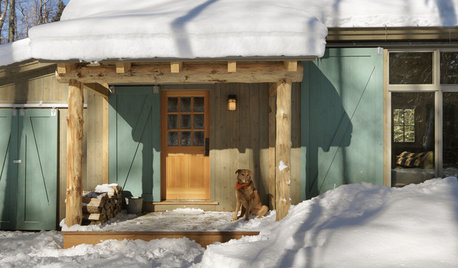It was inevitable. After reading the threads here on making sourdough for a long enough time, I would have to make sourdough myself. I've made it in the past once or twice with mediocre results. This time I'm hoping for something better. And because the existing threads, notable John's, have grown quite long and complex, I decided not to confuse those stories by adding new information. So I'm starting a new thread.
This thread will begin by talking about a method I found while surfing the web for developing a wild yeast sourdough starter from scratch. I was attracted to this method because it is straightforward and makes a lot of sense for two main reasons.
1. The source of the wild yeast is whole grain rye flour. This seems like a more consistent source than the yeast spores which happen be floating around the house at any particular time. And it will be strains of yeast adapted to grain, which is what I want.
2. Fruit juice, specifically pineapple, is used initially as the liquid. The purpose of this is to establish an acid environment right off the bat. Any sourdough starter will develop acidity eventually. My thinking is that starting with low pH will be all the more favorable to the growth of the right kind of yeast strains, as well as short cutting the process.
I began the starter last Friday evening. I got a dollar's worth of rye flour from a health food store. I drained the juice from a can of unsweetened pineapple I had on hand. I measured, mixed and placed the container on top of my fridge with a digital thermomer. The temperature there is 78°-80° F most of the time.
I will post photos I've been taking in an attempt to emulate John. You will laugh at my oversized container. I somehow could not accept the idea that this starter is made in a small quantity. I'll change to a smaller one later.
As a result of my oversized jar, the detail in the starter is not too easy to see. The web site I've linked, however, has better pictures and represent my starter very well. Amazingly, my starter has been acting exactly as it it is supposed to. How often does that happen?
Jim
Here is a link that might be useful: Wild Yeast Sourdough Starter






jimsterOriginal Author
John__ShowMe__USA
Related Discussions
My Sourdough Starter
Q
Yeast, just yeast
Q
Wild Yeast Sourdough with something extra...
Q
Do you do....sourdough starters?
Q
ksrogers
John__ShowMe__USA
bejay9_10
ksrogers
jimsterOriginal Author
ksrogers
bejay9_10
John__ShowMe__USA
david52 Zone 6
jimsterOriginal Author
jimsterOriginal Author
jimsterOriginal Author
ksrogers
bejay9_10
ksrogers
John__ShowMe__USA
bejay9_10
John__ShowMe__USA
ksrogers
jimsterOriginal Author
ksrogers
bejay9_10
John__ShowMe__USA
ksrogers
jimsterOriginal Author
jimsterOriginal Author
bejay9_10
John__ShowMe__USA
jimsterOriginal Author
jimsterOriginal Author
John__ShowMe__USA
jimsterOriginal Author
ksrogers
John__ShowMe__USA
jimsterOriginal Author
ksrogers
bejay9_10
jimsterOriginal Author
ksrogers
jimsterOriginal Author
ksrogers
bejay9_10
ksrogers
bejay9_10
ksrogers
gobi
jimsterOriginal Author
ksrogers